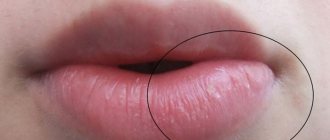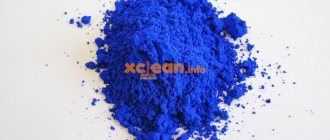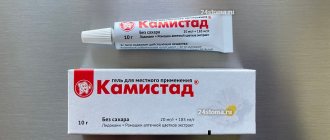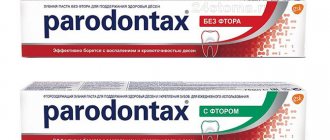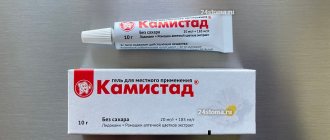These diseases are related to drug allergies, they spread to the oral cavity and can be combined with other lesions of the body. The most common cause is antibiotics (penicillin, tetracycline, streptomycin), sulfonamide drugs, analgesics, novocaine, iodine, bromides, etc.
The rate of development and severity of the allergic reaction depends on the method of administration of the drug. Often in pediatric dental practice, applications of painkillers and other medications are used. They most often cause sensitization. Frequent use and high dosage of the drug are also of great importance for the development of allergies.
The danger of drug allergies is that it combines all types of allergic reactions. This happens for several reasons. Firstly, as a result of the individual reactivity of the child’s body, as well as the presence of general somatic pathology. In addition, the nature of the drug allergen and the method of its administration are important.
What is allergic stomatitis?
Allergic stomatitis is called inflammation of the mucous membrane, provoked by hypersensitivity to certain irritants. A distinctive feature of the disease is a long incubation period. That is, from the moment an allergic reaction occurs until the first signs of stomatitis appear, up to four weeks can pass. In general, read about what stomatitis is in a separate article.
People of any gender and age are susceptible to the disease, but people with allergies, workers in hazardous industries and residents of areas with poor ecology are at risk.
Ulcerative necrotic stomatitis, cheilitis, glossitis
This disease usually develops against the background of general severe allergic reactions affecting the skin, mucous membranes and internal organs. It develops acutely and is characterized by salivation, a pronounced bad breath with a sweetish taste. The mucous membranes show severe hyperemia and swelling with yellowish-gray foci of necrosis. Necrosis of the interdental papillae is observed, the mucous membrane is covered with a dirty gray fibrinous plaque, after removal of which an ulcerative, bleeding surface is exposed. The disease occurs against a background of general weakness; children experience headache, loss of appetite, pain in the mouth, which worsens when eating and talking, and sometimes increased body temperature. The submandibular lymph nodes are enlarged and painful.
When examining blood, an increase in the level of leukocytes - eosinophils and ESR is noted.
Treatment is based on the abolition of the drug that caused the allergy, the prescription of antihistamines, and in severe cases, corticosteroids, Hemodez, Poliglyukin, etc. are prescribed. Local treatment includes antiseptic treatment, removal of necrotic masses through the use of proteolytic enzymes, painkillers, keratoplasty.
Symptoms of allergic stomatitis
Symptoms of allergic stomatitis in adults and children appear even at the initial stage of the pathology; the disease from the first days negatively affects the condition of the patient’s entire body.
Common signs of allergic stomatitis in the mouth include:
- itching and burning of the mucous membrane;
- pain when chewing;
- dry mouth;
- viscous saliva, similar in consistency to foam;
- swelling of the tongue, gums, swelling of the cheeks;
- fever and headache are possible.
Stages of the disease
- catarrhal allergic stomatitis - the initial form, characterized by dryness and burning in the mouth, without ulcers and plaque;
- bullous allergic stomatitis is the next stage, in which clusters of bubbles with cloudy liquid form on the surface of the mucosa;
- ulcerative necrotizing stomatitis is the most serious form, accompanied by severe pain, redness and swelling of the mucous membrane, and numerous ulcers with a gray coating.
Catarrhal and catarrhal-hemorrhagic stomatitis, cheilitis, glossitis
This is the mildest form of drug allergy. It is manifested by itching, burning, impaired taste sensitivity, dryness and pain when eating.
Clinical symptoms: hyperemia, swelling of the mucous membrane, as indicated by tooth marks on the lateral surfaces of the tongue and cheeks. Differential diagnosis is carried out with similar changes in the oral mucosa in cases of hypovitaminosis C, B, gastrointestinal diseases, infectious and fungal infections.
For this disease, both local treatment is used in the form of rinsing with antiseptic agents and taking painkillers, as well as general treatment: withdrawal of allergen medication, antihistamines (Diphenhydramine, Diprazin, Suprastin, Tavegil), calcium supplements. It is recommended to drink plenty of fluids and eat foods that do not irritate the mucous membranes.
Causes of development of allergic stomatitis
The main cause of pathology is the entry of an allergen into the body. Allergies can occur due to taking antibiotics, insect bites, accumulation of dust, food or contact with materials. Depending on the cause, there are several types of allergic stomatitis.
Contact allergic stomatitis
Occurs due to the effect of drugs and materials on the mucous membrane, for example, orthodontic apparatus, prosthesis or cement for its installation. The formations are usually located only at the site of contact of the mucous membrane with the irritant. A distinctive sign is swelling of the cervical lymph nodes.
Toxic-allergic stomatitis
Appears when pathogenic organisms multiply in the oral cavity, causing toxic poisoning. It is characterized by swelling of the mucous membrane, milky or brownish coating on the tongue.
Drug-induced allergic stomatitis
Develops after taking medications orally or when applied topically. Accompanied by nausea, headache, difficulty breathing, fever and numerous rashes. With drug-induced stomatitis, it is necessary to first relieve the symptoms of intoxication and only then treat the external manifestations of the pathology.
Erosive-ulcerative stomatitis, cheilitis, glossitis
This disease is manifested by hyperemia and swelling of the palate, gums, lips, tongue and cheeks, the appearance of blisters with transparent contents, after opening of which erosions are formed, covered with fibrinous plaque. These symptoms are accompanied by pain, which is aggravated by eating and talking. Weakness, loss of appetite, and increased body temperature up to 38C may appear.
The disease is easily confused with acute herpetic stomatitis, erythema multiforme and pemphigus, so the diagnosis is carried out by an allergist together with a dermatologist.
Treatment consists of discontinuing the intolerable drug and prescribing antihistamines. In severe cases, corticosteroids are prescribed. Local treatment includes painkillers and antiseptic treatment of the oral cavity. It is recommended to eat non-irritating foods and drink plenty of fluids.
Diagnostics
First of all, a visual examination is carried out: the dentist assesses the condition of the mucous membrane, looks for the presence of dentures, fillings and other materials that could become allergens. Then the doctor finds out the time of the first signs of the disease, the patient’s general well-being and possible factors of the disease: heredity, allergies, medication, diet, trips to other countries, contact with animals and insects. If allergic stomatitis is confirmed, tests are performed to clarify the allergen:
- study of the composition of saliva;
- sample from dentures or dental materials;
- immunogram;
- blood and urine tests.
Swollen throat
If the tongue and throat are swollen at the same time, this condition is life-threatening for the patient. In the vast majority of cases, this condition occurs during anaphylactic shock (the most severe manifestation of allergies). Only an experienced doctor can remove a patient from a state of anaphylactic shock, therefore, at the first signs of swelling of the tongue and throat, you should immediately call an ambulance, especially if the patient has other dangerous symptoms - such as difficulty swallowing, bluish coloration of the lips and nails, swelling of the eyes and lips, small rashes, low blood pressure, nausea, shortness of breath or choking.
Treatment of allergic stomatitis
Treatment involves eliminating the allergen, restoring the immune system and healing the mucosal tissue. The doctor prescribes antiallergic drugs, analgesics for severe pain, drugs to strengthen the immune system and ointments (Kamistad, Cholisal) to treat ulcers. It is important to avoid contact with the allergen: stop taking certain medications, remove certain foods from your diet, temporarily remove dentures, change oral care medications. The duration of treatment, as a rule, does not exceed 14 days, but in severe cases of the disease it can be extended by the attending physician.
To alleviate the patient’s condition, you can use traditional methods of treatment, but only after consulting a dentist:
- rinsing with cabbage juice, chamomile decoctions, aloe tinctures;
- treatment of affected areas with sea buckthorn oil;
- applying grated potatoes to the ulcers.
The principle of treatment of allergic stomatitis in adult and small patients is no different; the difference lies in the drugs. Depending on the age of the child, the doctor chooses more gentle medications or prescribes only medications for external treatment. Read more about the treatment of various types of stomatitis here.
1.General information
If you see a person’s face rapidly swelling, especially in the area of the eyelids and lips, the first thing that should come to mind is Quincke’s edema.
Acutely developing angioedema (neurovascular) edema is named after the German physician Heinrich Quincke, who gave the first detailed clinical description in 1882 (casuistic references to similar conditions have been found before). It is interesting that the term “Quincke’s edema” is used mainly in German- and Russian-speaking medicine, while in international English terminology they usually talk about “angioedema”.
Angioedema is one of the specific types of hypersensitivity reaction and can occur in any of us, regardless of age and gender. However, the predominance of young women (20-30 years old) among those with diagnosed episodes of Quincke's edema is sometimes reported. On the other hand, there is a form of angioedema (or rather, three subtypes) with a hereditary predisposition, first described by W. Osler six years after the publication of G. Quincke; In the presence of a family history, men are more often affected.
According to statistics, in the United States alone, angioedema causes emergency room calls about one hundred thousand times each year, and it consistently leads in the total number of allergic reactions and conditions that lead to hospitalization.
Sign up for a consultation
A must read! Help with treatment and hospitalization!
Prevention
If a patient once experiences allergic stomatitis, there is a high probability of it developing again. To prevent pathology, you need to pay attention to the following points.
- Immunity.
To strengthen the immune system and general health, it is recommended to take a course of comprehensive vitamin intake. - Nutrition.
It is better to exclude allergenic foods and hot spices from food and create a balanced menu. - Medicines.
When taking strong medications, especially antibiotics, it is necessary to include antihistamines, that is, antiallergic agents, in the list of medications. - Oral care.
If a toothpaste, brush or mouthwash causes discomfort, irritation or itching, you need to change the products yourself or choose the right ones together with your dentist.
The risk of developing allergic stomatitis and other diseases is minimal if you visit the dentist every six months for the prevention and timely treatment of pathologies in the early stages!
Swollen after puncture
Many patients complain that their tongue is swollen after piercing. In most cases, this swelling is not pathological. The tongue was injured during the puncture process, and slight swelling is completely natural and natural. Therefore, it is necessary to strictly adhere to the recommendations of the specialist who performed the puncture, keep the oral cavity clean, and rinse your mouth with antibacterial drugs. However, if the swelling does not go away within 4-5 days, and purulent exudate forms at the puncture site, you should immediately consult a doctor, since various complications often arise with tongue piercing.
Normally, healing after a puncture occurs within two weeks. During this period, the tongue may swell, hurt, and the patient may experience a feeling of discomfort, burning, and soreness. In the future, all these unpleasant symptoms will disappear, and after two weeks the wound should heal without a trace, and the swelling should go away.


